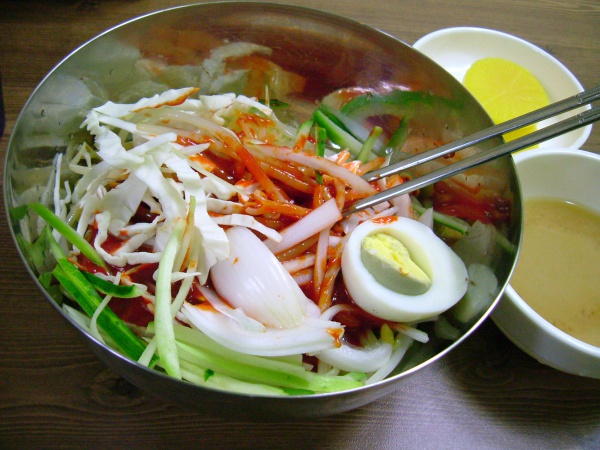Facts About Jjolmyeon
Jjolmyeon is a popular Korean noodle dish renowned for its distinctive chewy texture. These noodles are crafted from a blend of wheat flour and starch, which imparts their characteristic bite. When discussing jjolmyeon, people often refer to bibim-jjolmyeon—a cold, spicy variation that combines these noodles with an assortment of fresh vegetables.
The hallmark spicy sauce that coats jjolmyeon typically includes gochujang (Korean red chili paste), vinegar, sugar, and minced garlic. Common vegetables accompanying the noodles include crunchy cabbage and bean sprouts, offering a refreshing contrast to the spicy, chewy noodles.
The chewy texture of jjolmyeon is achieved through a unique manufacturing process that involves high heat and pressure, similar to the method used to make rice cakes.
The name "jjolmyeon" derives from the Korean word "jjolgit-jjolgit" meaning chewy, and "myeon" which means noodles in Hanja (Chinese characters). Together, jjolmyeon translates literally to "chewy noodles."
Jjolmyeon has an intriguing backstory. It originated in the 1970s in Incheon, South Korea, and swiftly became a favorite among young people, particularly at Korean snack restaurants called bunsikjeom. The dish was actually created by accident. During the production of naengmyeon (cold noodles), a mistake resulted in larger-than-usual noodles. These were given to a nearby bunsikjeom, where they were mixed with gochujang sauce, leading to the creation of jjolmyeon. Today, jjolmyeon is considered a signature dish of Incheon and is enjoyed by many.

 North Korea
North Korea